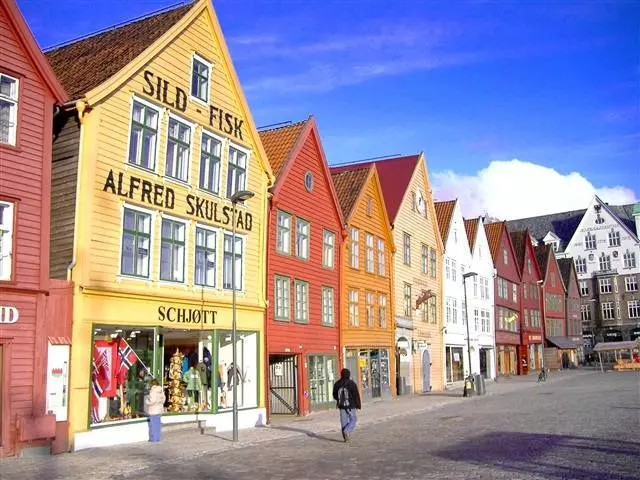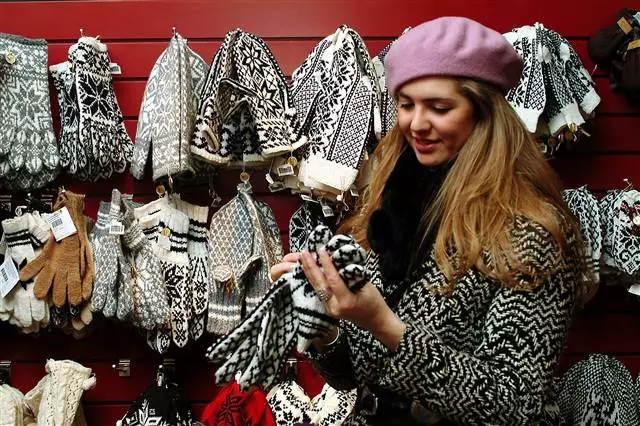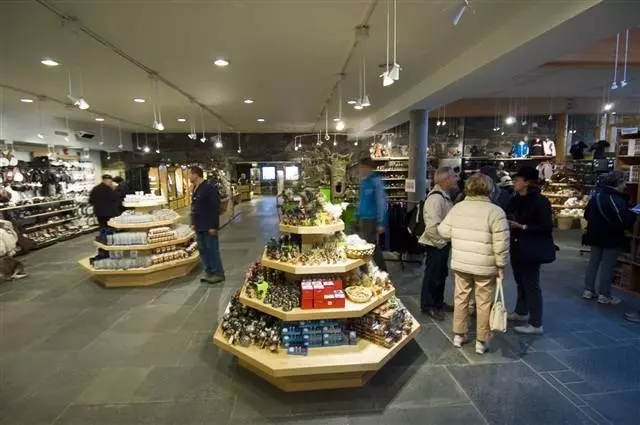What you can buy
Jewelry, as well as silver and bronze products from the manufacturer ARTS & CRAFTS. Can be purchased in stores located on Karl-Johans-Gate 18 and Bogstadveien 34, as well as in the mall Oslo City..
Interior Items In the ethnic and high-tech style made from natural raw materials, traded In the shop Traktoren. . Another large shopping point where you can choose furniture and homemade items, called Utopia Retro Modern. Shop Glasmagasinet, located on the street. Stortorvet specializes in the sale of glass products PorsGrund, popular throughout Europe.
Lovers of antique things can advise to look into Old Bucinistic Shop Damms Antikvariat , founded in 1843 - it is located on the street. Akersgata. As an option - you can visit the bookstore, open in 1916 - it is called with Langbarske, it is located along bygdoy Alle Street. Those who are more like Old musical instrument - Road B. Glem Ikken shop. On Saturday and Sunday, lovers of old days can stroll through the flea market which occurs in the area of the path from Frogornepark to ul. Street Karl-Johans-Gate.

Shopping points C. The most democratic prices The city is a store Nille, where you can buy household items, and Clas Ohlson. - there are traded by electrical goods, stationery and other things, IKEA (from the famous manufacturer of furniture), as well as Plantasjen and Oasen Hageland (Specialization - on the sale of green plantings for the garden).
The capital of Norway is one of the most "environmental" cities in Europe, so that the attitude towards the preservation of nature is special. In Oslo in Located A large number of institutions selling environmentally friendly food and natural tissue clothing . For example, such "Environmental" boutiques As "Hemp House" by Akersgata, 2, "Alphaville" on MarkVeien, 5), or "Friends Fair Trade", located on Storgata, 36, and many others.
In any of the city blocks you will find food shops from Seven-Eleven, Rema1000, Kiwi, Spar and other firms - usually in such trading establishments you can purchase not only food products, but also products for home, tools, household goods ...
What can I buy from souvenirs
Tourists usually spend a lot of money precisely on this article costs - it is necessary to please something and surprise close people! So here's about souvenirs from the capital of Norway and will go further.
The most famous souvenir from this northern country is Sweater - woolen, handmade, decorated with national ornaments . For a wide choice of such goods, you can go to the Dale of Norway souvenir shop. Sell sweaters and in Oslo Sweater Shop - this office has a product, by the way, and in the online store. You can buy a sweater, in principle, in any large institution, specializing in the sale of souvenirs, and it will cost you to approximately seven hundred Norwegian crowns.
In addition to sweaters, in the capital of Norway, you can also purchase other "useful" souvenirs - here they sell socks, mittens, t-shirts, sneakers. For the manufacture of sneakers and mittens use different skin and animal skins - seal, nerves, moose. Such clothing objects are approximately 315-330 kroons. You can buy a scarf - in Norway, they are made long and thick, so the neck is protected perfectly; Scarves are up to 350 Norwegian crowns.
The cost of handmade woolen socks, decorated with traditional patterns - approximately 19-25 crowns; You can buy them in various stores - not only in those that are traded only by souvenirs. As for T-shirts with national symbols, which are also popular among visitors tourists, they are up to 450 kroons.

Travelers also love travelers in Norway to buy figures of trolls - there are simply a huge amount of wooden, ceramic, in the form of soft toys here on the shelves ... Sold in Norway almost every step. The cheapest are thirty-five crowns.
As a gift, as an option, you can coalize and purchase some toy: a figure of a deer, moose or doll-norg. The latter in the country, by the way, is very popular, it is worth it from hundreds of crowns.
Often silver, tin, ceramic and porcelain products, painted vases, wood plates, animal skins, woolen tapestries are brought from Norway as souvenirs from Norway.
Souvenir products from Norway can be ordered and without traveling there - there is a website for this. www.norwayshop.com.
Schedule of shopping institutions
For the most part, shops and supermarkets in the Norwegian capital work as follows: on Mondays, Tuesdays, Wednesdays and Fridays, they open at 9 or 10 am and closed at 17:00. On Thursdays - work longer, until 19:00 or 20:00. On Saturdays, the working day is short, shops are closed at 15: 00-16: 00. On Sundays, commercial institutions in Oslo are closed.

Some major trading establishments, Molls, etc., the work schedule is longer - they close at eight o'clock in the evening or even later. For gas stations, small trading points selling food, close at 23:00. As for small outlets and stalls, they have their own regulations, so they are often open and on weekends are late - up to ten or eleven in the evening. Shops from the famous 7/11 network work around the clock.
Some negative features of local shopping
To those, firstly, belongs High cost of food - in particular, meat and dairy products. Secondly, there is such a characteristic feature as Seasonality assortment : The fact that in the rest of Europe can be bought all year round, it appears in Oslo before Christmas. For example, dark beer, smoked lamb rubber, some marzipan varieties and more. Thirdly The range of products may surprise some one-sidedness. : For example, here is a problem to buy tomato or garnet juice, but apple or orange - please. Those who can not live without alcohol and cigarettes will also have a disassemble - the prices for the relevant goods here are absolutely not happy.
Cause of such troubles - high sales tax In, due to which local citizens are forced to travel for a hundred kilometers from home - to Swedish Malls Stromstad or Svinesund.
